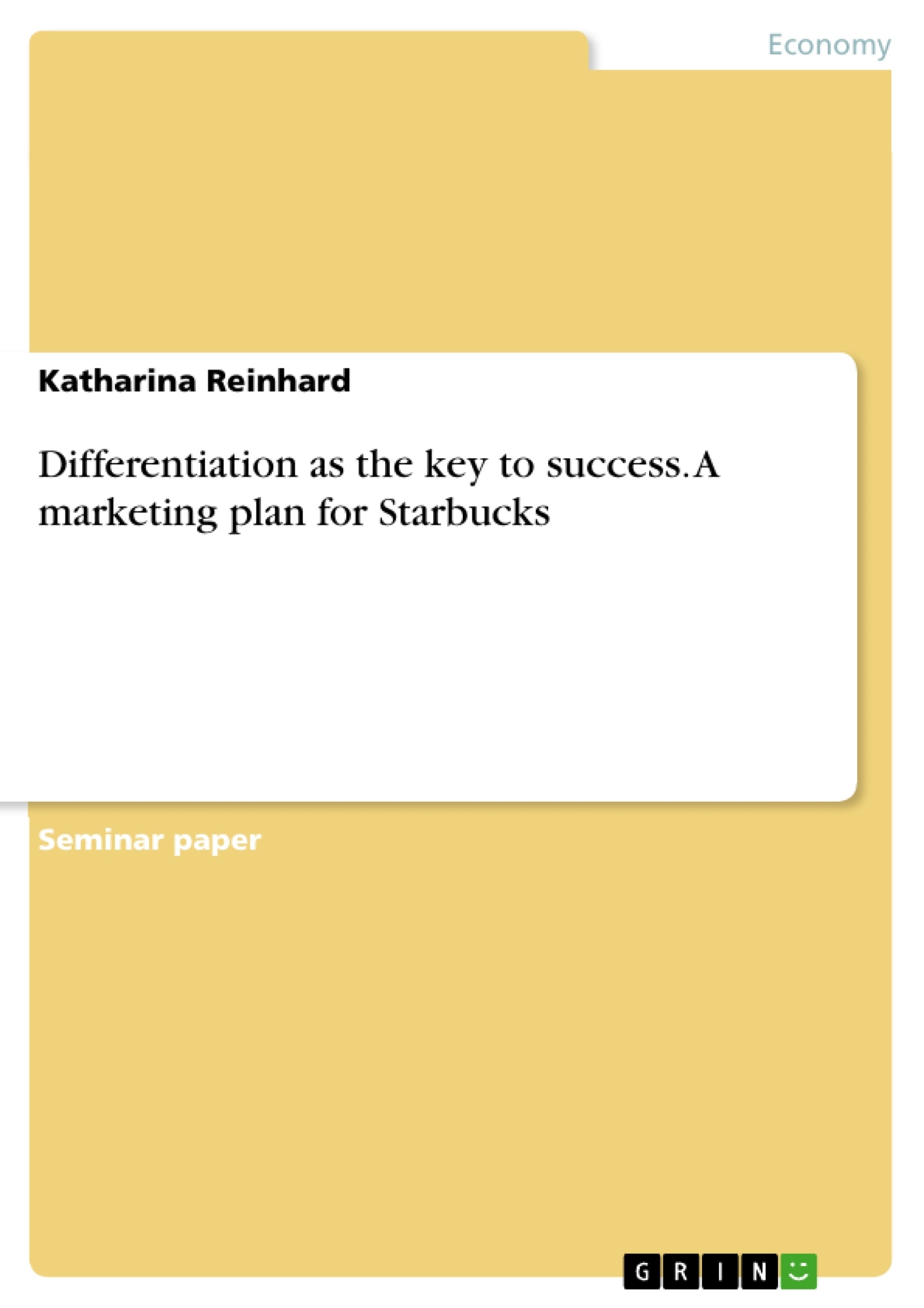The present paper develops a marketing plan for Starbucks. The author begins this task by performing a marketing analysis including a Porters Five Forces-analysis of the retail coffee and snacks industry. He then proceeds with an external and internal analysis, examining competitors and social, economic and environmental trends as well as the companies own resources and current position.
Following a SWOT-Analysis, different aspects of strategic and operational marketing are highlighted, among them the product itself, price, place, promotion, targeting and segmentation. Finally, implementation and control of the strategy are discussed and a conclusion is drawn.
Table of Contents
- Executive Summary
- Marketing Analysis
- Starbucks Market Profile
- Industry Overview and Analysis
- Porters Five Forces Analysis of the Retail Coffee and Snacks Industry
- External Analysis
- Competitive analysis
- Economic Trends
- Environmental Trends
- Social Trends
- Legal and political factors
- Technological factors
- Internal Analysis
- Audit Company's Resources
- Historical behavior over the past five years
- Current position against competition
- Market position in relation with last year's objectives
- SWOT-Analysis
- Mission, Vision & Objectives
- Strategic Marketing
- Marketing Strategy
- Segmentation
- Targeting
- Positioning
- Operational Marketing
- Product
- Price
- Place
- Promotion
- Strategy for specific product
- Strategy for a specific market
- Implementation & Control
- Short-term level
- Profitability control
- Strategic control
- Effectiveness
Objectives and Key Themes
This text provides a comprehensive analysis of Starbucks' success, examining the company's growth trajectory, market positioning, and strategic approach. The analysis delves into both internal and external factors contributing to Starbucks' prominence in the coffee industry.
- Differentiation Strategy
- Corporate Social Responsibility (CSR)
- Employee Empowerment and Partnership
- Customer Experience and "Third Place" Concept
- Marketing and Operational Strategies
Chapter Summaries
- Executive Summary: Introduces Starbucks' remarkable growth from its origins to its current position as a global leader in the coffee industry. Highlights key figures demonstrating Starbucks' consistent revenue growth, store expansion, and sales performance.
- Marketing Analysis: Explores Starbucks' market profile, including industry overview, Porter's Five Forces analysis, and a detailed examination of the retail coffee and snacks industry.
- External Analysis: Analyzes the external factors influencing Starbucks' success, including competitive landscape, economic trends, environmental, social, legal, political, and technological factors.
- Internal Analysis: Evaluates Starbucks' internal strengths, including a comprehensive audit of the company's resources, historical performance, competitive standing, and market positioning relative to its objectives.
- SWOT-Analysis: Provides a thorough SWOT (Strengths, Weaknesses, Opportunities, and Threats) analysis of Starbucks, identifying critical factors shaping the company's future.
- Mission, Vision & Objectives: Presents Starbucks' mission, vision, and strategic objectives, revealing the company's core values and aspirations.
- Strategic Marketing: Outlines Starbucks' overall marketing strategy, including segmentation, targeting, and positioning approaches.
- Operational Marketing: Examines Starbucks' operational marketing strategies, focusing on product development, pricing, distribution channels, and promotional activities.
- Implementation & Control: Discusses Starbucks' implementation and control mechanisms, encompassing short-term level, profitability control, strategic control, and effectiveness evaluation.
Keywords
Key concepts explored in this text include Starbucks' differentiation strategy, Corporate Social Responsibility (CSR), employee empowerment, customer experience, "Third Place" concept, market analysis, industry dynamics, competitive advantage, and strategic marketing implementation.
- Citar trabajo
- Katharina Reinhard (Autor), 2015, Differentiation as the key to success. A marketing plan for Starbucks, Múnich, GRIN Verlag, https://www.grin.com/document/317847



